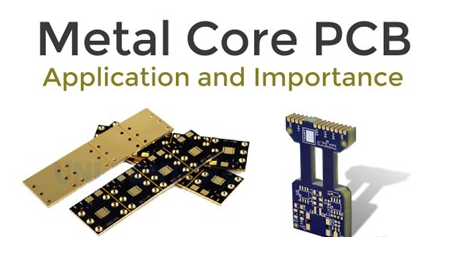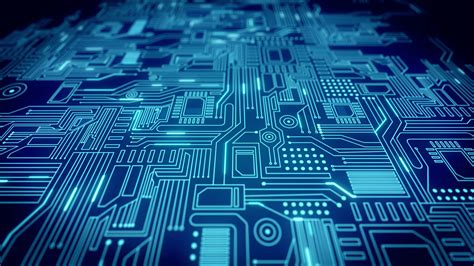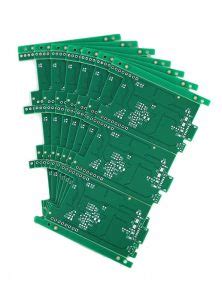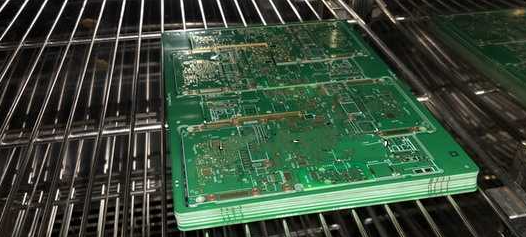What is metal core pcb
Introduction To Metal Core PCBs: Understanding The Basics
Metal Core Printed Circuit Boards (MCPCBs) represent a significant advancement in the field of electronics, offering unique benefits that address some of the limitations of traditional PCBs. At their core, MCPCBs are designed to enhance thermal management, a critical factor in the performance and longevity of electronic components.
Unlike conventional PCBs, which are typically made from materials like fiberglass or epoxy, MCPCBs incorporate a metal substrate, usually aluminum, copper, or a combination of both. This metal core serves as a heat sink, efficiently dissipating heat away from high-temperature components and thereby improving overall system reliability.
The construction of a metal core PCB involves several layers, each serving a distinct purpose.
The top layer is the copper circuit layer, which is similar to that found in standard PCBs and is used for the electrical connections. Beneath this is the dielectric layer, a thermally conductive but electrically insulating material that facilitates heat transfer from the circuit layer to the metal core. The metal core itself forms the base layer, providing structural support and acting as a heat spreader. This multi-layered structure is crucial for achieving the desired thermal performance while maintaining electrical insulation.
One of the primary advantages of MCPCBs is their ability to handle high power levels.

In applications where components generate significant amounts of heat, such as in LED lighting, power supplies, and automotive electronics, effective thermal management is essential. Traditional PCBs can struggle in these environments, leading to overheating and potential failure of components. MCPCBs, with their superior heat dissipation capabilities, mitigate this risk, ensuring that components operate within safe temperature ranges. This not only enhances performance but also extends the lifespan of the electronic device.
Furthermore, the use of metal core PCBs can lead to more compact and lightweight designs.
By efficiently managing heat, MCPCBs allow for higher component densities without the need for bulky heat sinks or additional cooling mechanisms. This is particularly beneficial in applications where space and weight are critical considerations, such as in aerospace and portable electronic devices. The ability to integrate thermal management directly into the PCB design simplifies the overall system architecture and can result in cost savings during manufacturing.
In addition to their thermal advantages, MCPCBs also offer improved mechanical stability.
The metal core provides a robust foundation that can withstand mechanical stresses better than traditional PCB materials. This makes MCPCBs suitable for use in environments subject to vibration, shock, or other physical stresses. The enhanced durability ensures that the electronic components remain securely mounted and maintain reliable connections, even under challenging conditions.
Despite their numerous benefits, it is important to note that MCPCBs are not without their challenges.
The manufacturing process for MCPCBs is more complex and can be more expensive than that for traditional PCBs. The choice of materials and the precision required in layering and bonding the different components necessitate specialized equipment and expertise. However, the long-term benefits in terms of performance, reliability, and design flexibility often justify the initial investment.
In conclusion, metal core PCBs represent a pivotal innovation in the electronics industry, addressing critical issues related to thermal management and mechanical stability. Their unique construction and material properties make them an ideal choice for high-power and high-reliability applications. As technology continues to advance and the demand for more efficient and compact electronic devices grows, the role of MCPCBs is likely to become increasingly prominent. Understanding the basics of metal core PCBs is essential for anyone involved in the design and manufacture of modern electronic systems.
Advantages Of Using Metal Core PCBs In Electronics
Metal Core Printed Circuit Boards (MCPCBs) have emerged as a significant innovation in the field of electronics, offering a range of advantages that make them highly desirable for various applications.

One of the primary benefits of using metal core PCBs is their superior thermal management capabilities.
Unlike traditional PCBs, which are typically made from materials like fiberglass, metal core PCBs incorporate a metal substrate, usually aluminum or copper, which provides excellent heat dissipation. This is particularly crucial in high-power applications where excessive heat can lead to component failure or reduced performance. By efficiently conducting heat away from critical components, metal core PCBs help maintain optimal operating temperatures, thereby enhancing the reliability and longevity of electronic devices.
In addition to thermal management, metal core PCBs offer improved mechanical stability.
The metal substrate provides a robust foundation that can withstand mechanical stresses and vibrations better than conventional PCBs. This makes them ideal for use in environments where electronic devices are subject to harsh conditions, such as automotive, aerospace, and industrial applications. The enhanced durability of metal core PCBs ensures that they can endure the rigors of these demanding environments without compromising performance.
Furthermore, metal core PCBs contribute to better electrical performance.
The metal substrate not only aids in heat dissipation but also serves as a ground plane, which can reduce electromagnetic interference (EMI) and improve signal integrity. This is particularly beneficial in high-frequency applications where maintaining signal quality is paramount. By minimizing EMI, metal core PCBs help ensure that electronic devices operate smoothly and efficiently, free from the disruptions that can be caused by electromagnetic noise.
Another advantage of metal core PCBs is their potential for miniaturization.
As electronic devices continue to shrink in size, the need for compact and efficient circuit boards becomes increasingly important. The superior thermal properties of metal core PCBs allow for higher component densities without the risk of overheating. This enables designers to create smaller, more powerful devices that can meet the growing demand for portable and wearable technology. The ability to pack more functionality into a smaller footprint is a significant advantage in the competitive electronics market.
Moreover, metal core PCBs are environmentally friendly.
The materials used in their construction, such as aluminum and copper, are recyclable, which aligns with the growing emphasis on sustainability in the electronics industry. By choosing metal core PCBs, manufacturers can reduce their environmental impact and contribute to a more sustainable future. This is an important consideration as consumers and regulatory bodies increasingly prioritize eco-friendly practices.
In conclusion, the advantages of using metal core PCBs in electronics are manifold. Their superior thermal management capabilities, improved mechanical stability, enhanced electrical performance, potential for miniaturization, and environmental benefits make them an attractive choice for a wide range of applications. As technology continues to evolve, the demand for reliable, efficient, and sustainable electronic components will only increase.
Metal core PCBs are well-positioned to meet these demands, offering a robust solution that addresses the challenges of modern electronic design. By leveraging the unique properties of metal core PCBs, manufacturers can create innovative products that deliver exceptional performance and reliability, ensuring their competitiveness in an ever-changing market.
Applications Of Metal Core PCBs In Modern Technology
Metal Core Printed Circuit Boards (MCPCBs) have become increasingly significant in modern technology due to their unique ability to efficiently manage heat. This characteristic makes them indispensable in various applications where thermal management is crucial.
One of the primary areas where MCPCBs are extensively utilized is in the lighting industry, particularly in LED technology.
LEDs generate a substantial amount of heat, which, if not properly dissipated, can lead to reduced performance and a shorter lifespan. MCPCBs, with their excellent thermal conductivity, ensure that the heat generated by LEDs is effectively dissipated, thereby enhancing the performance and longevity of LED lighting systems.
In addition to the lighting industry, MCPCBs are also pivotal in the automotive sector.
Modern vehicles are equipped with numerous electronic components that require efficient thermal management to function optimally. For instance, automotive lighting systems, including headlights and taillights, often use LEDs mounted on MCPCBs to ensure reliable performance under varying environmental conditions. Furthermore, MCPCBs are employed in powertrain control modules and other critical automotive electronics, where they help maintain the integrity and reliability of these systems by managing the heat generated during operation.
The telecommunications industry also benefits significantly from the use of MCPCBs.
With the advent of 5G technology and the increasing demand for high-speed data transmission, the need for efficient thermal management in telecommunications equipment has never been greater. MCPCBs are used in various components of telecommunications infrastructure, such as base stations and network servers, to ensure that these systems operate efficiently and reliably. By effectively dissipating heat, MCPCBs help prevent overheating, which can lead to system failures and downtime.
Moreover, MCPCBs find applications in the renewable energy sector, particularly in solar power systems.
Solar panels and inverters generate considerable heat during operation, which can affect their efficiency and lifespan. By incorporating MCPCBs into these systems, manufacturers can enhance thermal management, thereby improving the overall performance and durability of solar power installations. This is particularly important as the world increasingly turns to renewable energy sources to meet its energy needs.
In the realm of consumer electronics, MCPCBs are used in a variety of devices, including smartphones, tablets, and laptops.
These devices generate significant heat due to their compact size and high processing power. MCPCBs help manage this heat, ensuring that the devices remain cool and function efficiently. This not only enhances the user experience but also extends the lifespan of the devices.
Furthermore, the medical industry also leverages the benefits of MCPCBs in various applications.
Medical devices, such as imaging equipment and diagnostic tools, require precise and reliable performance. Efficient thermal management is crucial in these devices to ensure accurate results and prevent overheating, which can lead to malfunctions. MCPCBs provide the necessary thermal conductivity to maintain the optimal operating temperature of these critical medical devices.
In conclusion, the applications of Metal Core PCBs in modern technology are vast and varied. From the lighting and automotive industries to telecommunications, renewable energy, consumer electronics, and medical devices, MCPCBs play a crucial role in ensuring efficient thermal management. This, in turn, enhances the performance, reliability, and longevity of various electronic systems and devices, making MCPCBs an indispensable component in the advancement of modern technology.

Manufacturing Process Of Metal Core PCBs: A Step-By-Step Guide
Metal Core Printed Circuit Boards (MCPCBs) are a specialized type of PCB that incorporate a metal substrate, typically aluminum or copper, to enhance thermal management. The manufacturing process of MCPCBs is intricate and involves several critical steps to ensure the final product meets the required specifications. Understanding this process is essential for anyone involved in the design and production of electronic devices that demand efficient heat dissipation.
The first step in the manufacturing process of MCPCBs is the selection of the appropriate metal substrate.
Aluminum is commonly chosen due to its excellent thermal conductivity and cost-effectiveness, although copper is also used for applications requiring superior thermal performance. Once the substrate material is selected, it is cut to the desired size and shape, forming the base of the PCB.
Following the substrate preparation, a dielectric layer is applied to the metal base.
This layer serves as an insulating barrier between the metal core and the conductive copper layer that will be added later. The dielectric material must possess high thermal conductivity to facilitate efficient heat transfer while maintaining electrical insulation. The application of the dielectric layer is typically achieved through a lamination process, where the material is pressed onto the metal substrate under high temperature and pressure.
Once the dielectric layer is in place, the next step involves the application of the copper foil.
The copper foil is laminated onto the dielectric layer using a similar process to ensure a strong bond. This copper layer will form the conductive pathways of the PCB. After lamination, the copper foil undergoes a series of photolithographic processes to define the circuit pattern. A photosensitive resist is applied to the copper surface, and the desired circuit pattern is transferred onto the resist using ultraviolet light. The exposed areas of the resist are then developed, revealing the underlying copper that will form the circuit traces.
The subsequent step is the etching process, where the exposed copper is removed using a chemical solution, leaving behind the desired circuit pattern.
The remaining photoresist is then stripped away, exposing the clean copper traces. At this stage, the PCB undergoes a thorough inspection to ensure the accuracy and integrity of the circuit pattern.
Following the etching process, the PCB is drilled to create holes for component leads and vias. These holes are typically drilled using precision machinery to ensure accurate placement and size. After drilling, the holes are plated with copper to establish electrical connections between different layers of the PCB.
The final steps in the manufacturing process involve the application of a solder mask and surface finish.
The solder mask is a protective layer applied over the copper traces to prevent oxidation and short circuits during soldering. The surface finish, such as HASL (Hot Air Solder Leveling) or ENIG (Electroless Nickel Immersion Gold), is applied to the exposed copper pads to enhance solderability and protect against corrosion.
Throughout the entire manufacturing process, rigorous quality control measures are implemented to ensure the final product meets industry standards and customer specifications. These measures include visual inspections, electrical testing, and thermal performance evaluations.
In conclusion, the manufacturing process of Metal Core PCBs is a complex and precise procedure that involves multiple steps, from substrate selection to final surface finishing. Each step is crucial in ensuring the PCB’s performance, reliability, and thermal management capabilities. Understanding this process provides valuable insights into the production of high-quality MCPCBs, which are essential for applications requiring efficient heat dissipation and robust performance.





